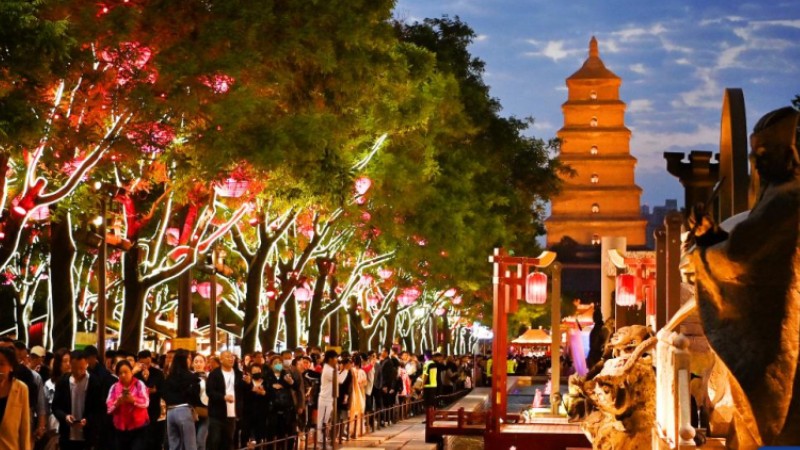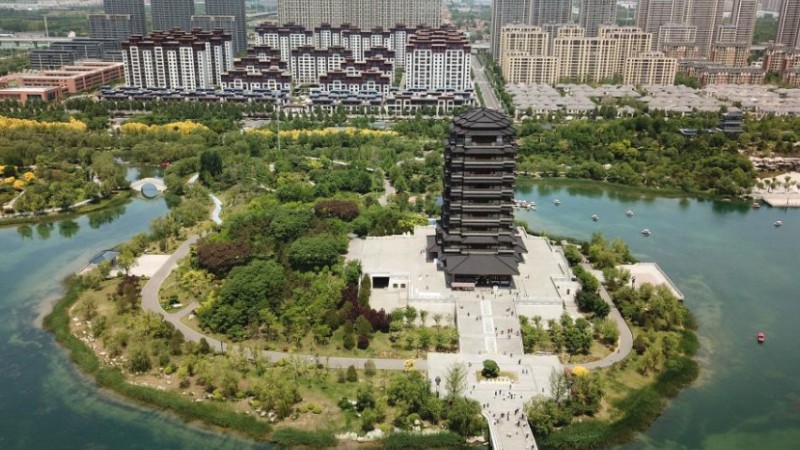A glimpse of Qinzhou Port in S China's Guangxi

A crane unloads containers at a railway container distribution center in Qinzhou City, south China's Guangxi Zhuang Autonomous Region, May 11, 2023. With boosts from the Regional Comprehensive Economic Partnership (RCEP) and the Belt and Road Initiative (BRI), the New International Land-Sea Trade Corridor saw over 300,000 twenty-foot equivalent units (TEUs), an increase of 14 percent year-on-year, being transported by the rail-sea intermodal freight trains this year. At present, over 940 kinds of goods can be transported through the New International Land-Sea Trade Corridor, which covers 61 cities in China and reaches 393 ports in 119 countries and regions. (Xinhua/Zhang Ailin)

A crane uploads containers at a railway container distribution center in Qinzhou City, south China's Guangxi Zhuang Autonomous Region, May 11, 2023. With boosts from the Regional Comprehensive Economic Partnership (RCEP) and the Belt and Road Initiative (BRI), the New International Land-Sea Trade Corridor saw over 300,000 twenty-foot equivalent units (TEUs), an increase of 14 percent year-on-year, being transported by the rail-sea intermodal freight trains this year. At present, over 940 kinds of goods can be transported through the New International Land-Sea Trade Corridor, which covers 61 cities in China and reaches 393 ports in 119 countries and regions. (Xinhua/Zhang Ailin)

This aerial photo taken on May 11, 2023 shows a railway container distribution center in Qinzhou City, south China's Guangxi Zhuang Autonomous Region. With boosts from the Regional Comprehensive Economic Partnership (RCEP) and the Belt and Road Initiative (BRI), the New International Land-Sea Trade Corridor saw over 300,000 twenty-foot equivalent units (TEUs), an increase of 14 percent year-on-year, being transported by the rail-sea intermodal freight trains this year. At present, over 940 kinds of goods can be transported through the New International Land-Sea Trade Corridor, which covers 61 cities in China and reaches 393 ports in 119 countries and regions. (Xinhua/Zhang Ailin)

A train, loaded with goods from ASEAN countries, departs from a railway container distribution center in Qinzhou City, south China's Guangxi Zhuang Autonomous Region, May 11, 2023. This train will arrive at Tuanjiecun Station in southwest China's Chongqing three days later, suggesting over 300,000 TEUs have been transported this year through the New International Land-Sea Trade Corridor. With boosts from the Regional Comprehensive Economic Partnership (RCEP) and the Belt and Road Initiative (BRI), the New International Land-Sea Trade Corridor saw over 300,000 twenty-foot equivalent units (TEUs), an increase of 14 percent year-on-year, being transported by the rail-sea intermodal freight trains this year. At present, over 940 kinds of goods can be transported through the New International Land-Sea Trade Corridor, which covers 61 cities in China and reaches 393 ports in 119 countries and regions. (Xinhua/Zhang Ailin)

This aerial photo taken on May 11, 2023 shows an automatic container terminal of Qinzhou Port and a railway container distribution center in Qinzhou City, south China's Guangxi Zhuang Autonomous Region. With boosts from the Regional Comprehensive Economic Partnership (RCEP) and the Belt and Road Initiative (BRI), the New International Land-Sea Trade Corridor saw over 300,000 twenty-foot equivalent units (TEUs), an increase of 14 percent year-on-year, being transported by the rail-sea intermodal freight trains this year. At present, over 940 kinds of goods can be transported through the New International Land-Sea Trade Corridor, which covers 61 cities in China and reaches 393 ports in 119 countries and regions. (Xinhua/Zhang Ailin)
Photos
Related Stories
- South China's Qinzhou Port sees robust foreign trade growth in Q1
- China's Tianjin Port sees robust trade growth in Q1
- Chinese firm wins deal to build 3rd largest port in Cambodia
- China's land port handles over 1,000 China-Europe freight trains
- Cargo throughput of Guoyuan Port reaches 6.19 million tonnes in first quarter of 2023
- China's Tianjin Port reports container throughput of 5.047 mln TEUs in Q1
- China's Beibu Gulf Port sees rise in cargo throughput in Q1
- In pics: Bakti port in Xinjiang, NW China
- China's largest land port witnesses steady growth of passenger traffic
- SE China’s Ningde opens its first ro-ro shipping route to Mexico
Copyright © 2023 People's Daily Online. All Rights Reserved.









